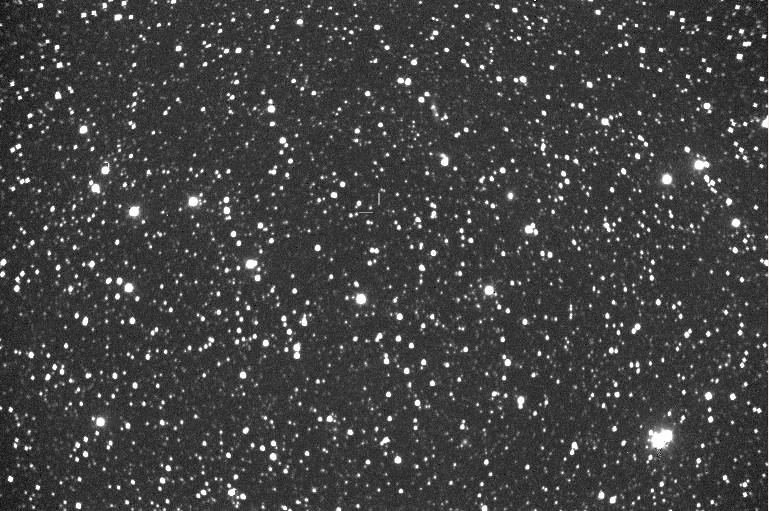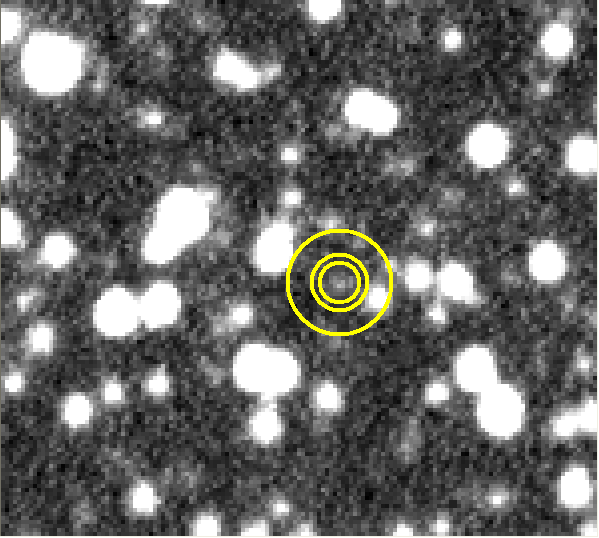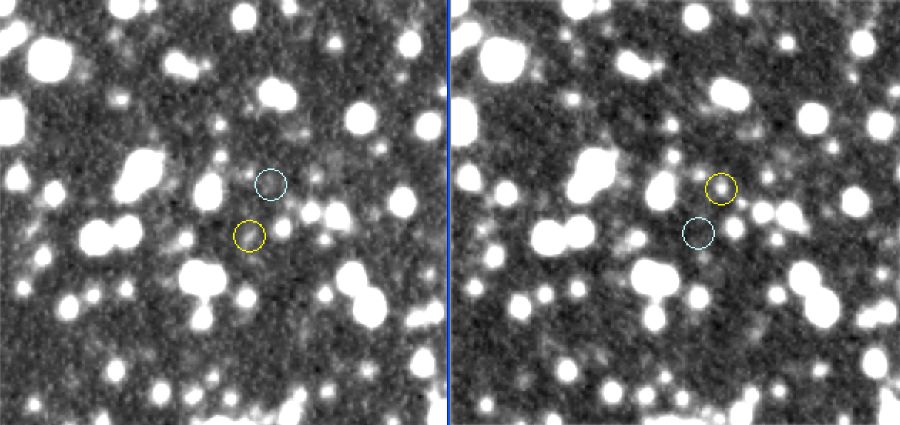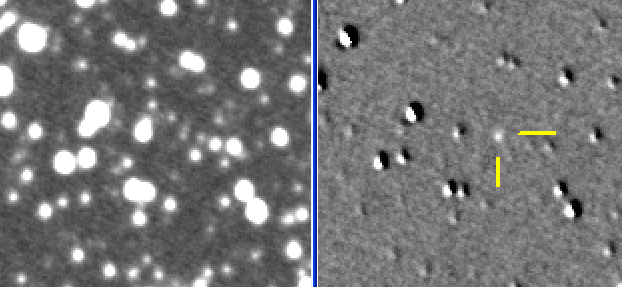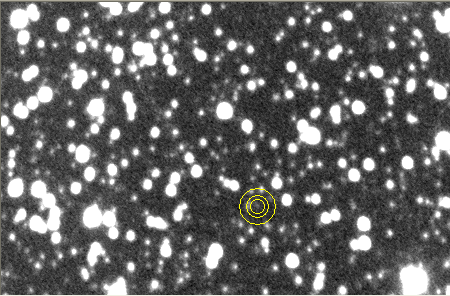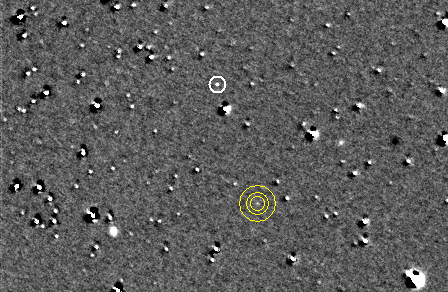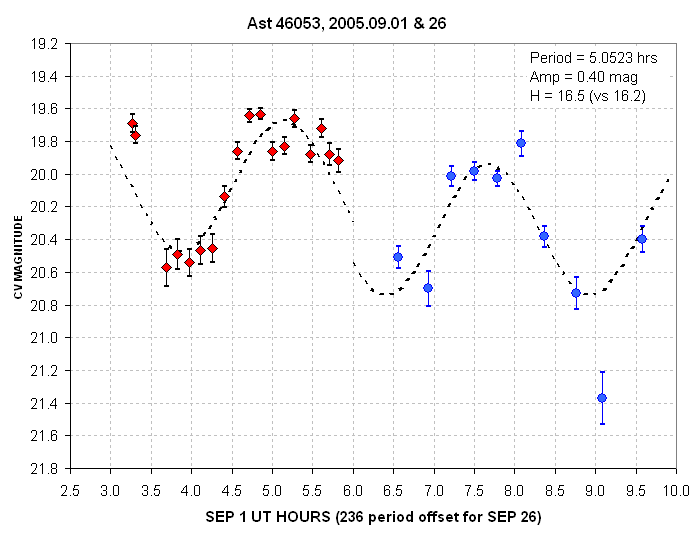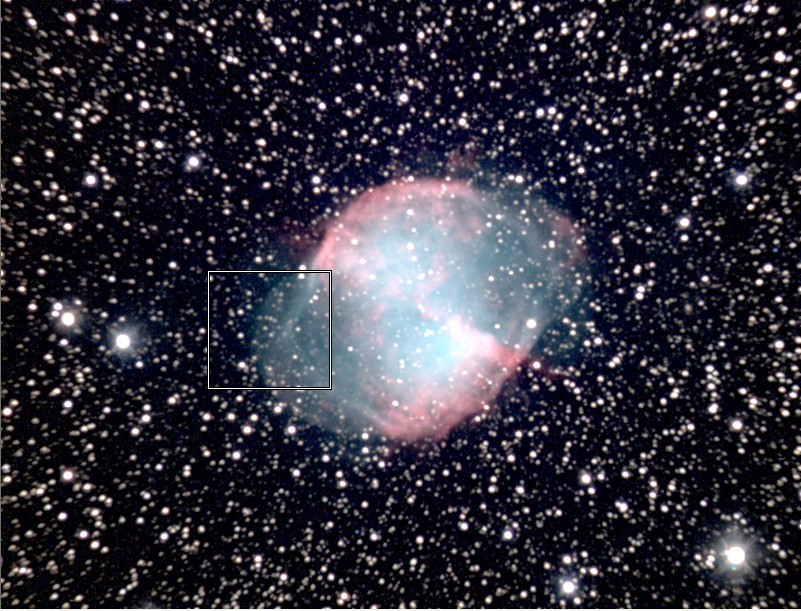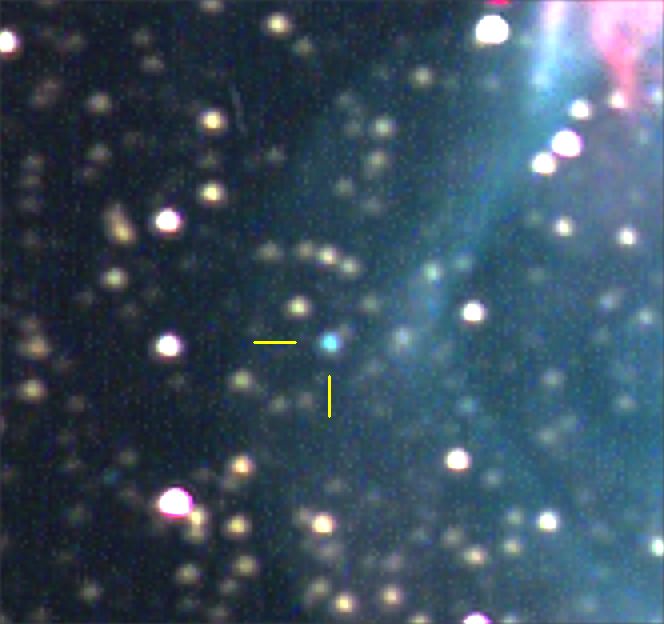This web page describes the determination of a light curve for a faint asteroid. It is not unusual for professionals to establish light curves for main belt asteroids having opposition magnitudes of ~20 to 21; however, the observations and analysis described here were performed by amateurs. Special data analysis procedures were devised to reduce the effects of background field stars. The principal value of this web page is a description of these data analysis techniques.
